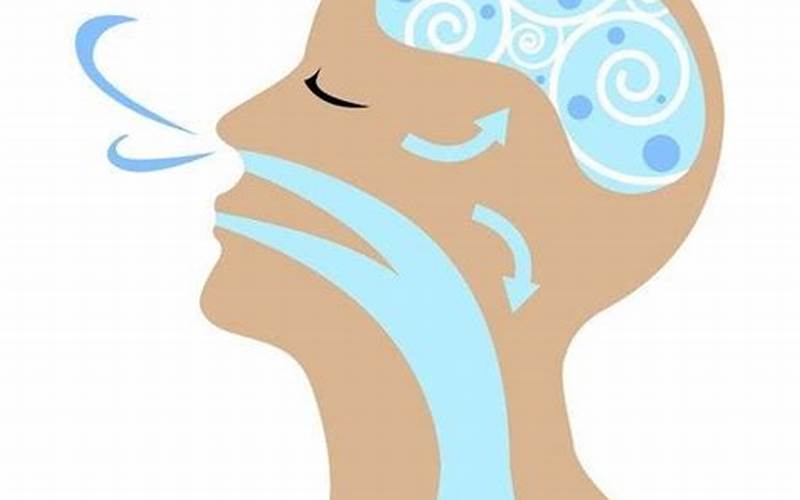Breathing Exercises for Mesothelioma: Techniques to Help You Breathe Easier
 Source: bing.com
Source: bing.com Have you been diagnosed with mesothelioma and having difficulty breathing? Mesothelioma is a rare form of cancer that affects the lining of different organs. One of the most common symptoms of mesothelioma is shortness of breath. Fortunately, practicing breathing exercises can help alleviate some of the discomfort that comes with mesothelioma. This article will explore different breathing techniques that you can use to improve your lung function, reduce your anxiety, and ultimately breathe easier. Let’s get started!
What is Mesothelioma?
Mesothelioma is a type of cancer that affects the lining of different organs, such as the lungs, heart, and abdomen. The disease is usually caused by exposure to asbestos, a group of minerals that were commonly used in construction and manufacturing throughout the 20th century. People who have been exposed to asbestos for an extended period have a higher risk of developing mesothelioma, even if the exposure occurred many years ago. Mesothelioma is a rare disease, and it is challenging to diagnose in its early stages. However, some symptoms that may indicate mesothelioma include chest pain, shortness of breath, and chronic coughing.
Why Do People with Mesothelioma Struggle to Breathe?
People with mesothelioma often experience difficulty breathing because the disease affects the lining of the lungs. The lining becomes inflamed and produces excess fluid, which can compress the lungs and reduce their capacity. This condition is called pleural effusion, and it can cause shortness of breath, chest pain, and fatigue. Additionally, mesothelioma can spread to other parts of the body, such as the diaphragm, which can also affect breathing.
The Benefits of Breathing Exercises for Mesothelioma Patients
 Source: bing.com
Source: bing.com Practicing breathing exercises can help mesothelioma patients in several ways. Here are some of the benefits:
| Benefit |
Explanation |
| Improved Lung Function |
Breathing exercises can help strengthen the muscles used in breathing, allowing for better oxygen flow and increased lung capacity. |
| Reduced Anxiety |
Many mesothelioma patients experience anxiety and stress due to their diagnosis. Breathing exercises can help reduce these symptoms and promote relaxation and calm. |
| Improved Quality of Life |
By reducing shortness of breath, breathing exercises can improve a mesothelioma patient’s quality of life and allow them to perform everyday activities with more ease. |
| Increased Energy |
When you can breathe more efficiently, your body has more energy to perform everyday tasks. |
Breathing Exercises for Mesothelioma Patients
1. Pursed Lip Breathing
 Source: bing.com
Source: bing.com Pursed lip breathing is a simple technique that can be done anywhere, at any time. Here’s how to do it:
Step 1: Sit or stand in a comfortable position.
Step 2: Breathe in through your nose for two seconds.
Step 3: Pucker your lips as if you were going to whistle or blow out candles on a cake.
Step 4: Breathe out through your pursed lips for four seconds.
Step 5: Repeat this cycle for 5-10 minutes.
This exercise helps to slow down your breathing and increase oxygen flow, making it easier to take deeper breaths.
2. Diaphragmatic Breathing
 Source: bing.com
Source: bing.com Diaphragmatic breathing, also known as belly breathing, is another effective technique for mesothelioma patients. Here’s how to do it:
Step 1: Lie on your back or sit comfortably with your feet on the ground and your back straight.
Step 2: Place one hand on your chest and the other hand on your stomach.
Step 3: Breathe in slowly through your nose, filling your stomach with air and pushing your hand out. Your chest should remain relatively still.
Step 4: Breathe out slowly through pursed lips, pressing gently on your stomach to help push the air out.
Step 5: Repeat this cycle for 10-15 minutes.
Diaphragmatic breathing helps to promote relaxation and reduce shortness of breath by strengthening the diaphragm muscle used in breathing.
3. Segmental Breathing
 Source: bing.com
Source: bing.com Segmental breathing is a technique that involves focusing on different areas of the lungs to increase overall lung capacity. Here’s how to do it:
Step 1: Sit or stand in a comfortable position with your back straight.
Step 2: Place your hands on your chest and stomach.
Step 3: Breathe in slowly through your nose, focusing on filling the lowest part of your lungs first. Your stomach should expand.
Step 4: Pause briefly, then breathe in again, this time filling the middle part of your lungs. You should feel your chest expand.
Step 5: Pause briefly, then breathe in again, filling the upper part of your lungs. You should feel your collarbone rise slightly.
Step 6: Breathe out slowly through pursed lips, focusing on emptying your lungs completely.
Step 7: Repeat this cycle 5-10 times.
Segmental breathing helps to increase lung capacity and allows you to take deeper breaths.
4. Alternate Nostril Breathing
 Source: bing.com
Source: bing.com Alternate nostril breathing is a yoga technique that helps promote relaxation and balance. Here’s how to do it:
Step 1: Sit in a comfortable position with your back straight.
Step 2: Place your left hand on your left knee with your palm up. Place your right hand on your nose.
Step 3: Use your right thumb to close your right nostril and inhale through your left nostril for 4 seconds.
Step 4: Hold your breath for 2 seconds, then use your right ring finger to close your left nostril and exhale through your right nostril for 8 seconds.
Step 5: Inhale through your right nostril for 4 seconds.
Step 6: Hold your breath for 2 seconds, then exhale through your left nostril for 8 seconds.
Step 7: Repeat this c
ycle 5-10 times.
Alternate nostril breathing helps to promote relaxation and balance, which can reduce anxiety and improve overall well-being.
Frequently Asked Questions
1. Are breathing exercises safe for mesothelioma patients?
 Source: bing.com
Source: bing.com Yes, breathing exercises are generally safe for mesothelioma patients. However, it’s important to talk to your doctor before starting any new exercise program to ensure it’s safe for you.
2. How often should I do breathing exercises?
You can do breathing exercises as often as you like. Starting with 5-10 minutes a day and gradually increasing the duration and frequency is a good idea.
3. Can breathing exercises cure mesothelioma?
No, breathing exercises cannot cure mesothelioma. However, they can help alleviate some of the symptoms and improve overall quality of life.
4. Can breathing exercises be done sitting down?
Yes, many breathing exercises can be done sitting down. In fact, it’s often recommended for people with mesothelioma who may experience fatigue or shortness of breath when standing.
5. Can breathing exercises be done with oxygen therapy?
Yes, breathing exercises can be done with or without oxygen therapy. However, it’s essential to consult with your doctor before starting any new exercise program.
6. How long does it take to see the benefits of breathing exercises?
The benefits of breathing exercises can vary from person to person. Some people may notice improvements right away, while others may take a few weeks to see changes. Consistency is essential for best results.
7. Are there any risks associated with breathing exercises?
Breathing exercises are generally safe, but there may be some risks for certain people. For example, people with certain respiratory conditions, such as chronic obstructive pulmonary disease (COPD), may need to modify their breathing exercises to avoid exacerbating symptoms. It’s important to talk to your doctor before starting any new exercise program.
8. Can breathing exercises be done with a lung transplant?
Yes, breathing exercises can be done with a lung transplant. However, it’s important to follow your doctor’s advice and guidelines for exercise post-lung transplant.
9. Do I need to join a class or hire a trainer to do breathing exercises?
No, you can do breathing exercises on your own at home. However, some people may benefit from joining a class or working with a trainer to learn proper technique and get personalized feedback.
10. Can breathing exercises help with pain management?
While breathing exercises may not directly alleviate pain, they can help reduce anxiety and promote relaxation, which can make pain more manageable.
11. How long should I practice breathing exercises each day?
You can practice breathing exercises for as long as you like, but starting with 5-10 minutes a day is a good idea. Gradually increase the duration and frequency as you become more comfortable.
12. Can breathing exercises help me sleep better?
Yes, breathing exercises can help promote relaxation and reduce anxiety, which can improve sleep quality.
13. Can breathing exercises be done in combination with other treatments?
Yes, breathing exercises can be done in combination with other treatments for mesothelioma, such as chemotherapy, radiation therapy, and surgery. It’s important to talk to your doctor about what combination of treatments is right for you.
Conclusion
 Source: bing.com
Source: bing.com Mesothelioma is a challenging disease, but practicing breathing exercises can help alleviate some of the discomfort that comes with it. Breathing exercises can improve lung function, reduce anxiety, and ultimately help mesothelioma patients breathe easier. Whether it’s pursed lip breathing, diaphragmatic breathing, segmental breathing, or alternate nostril breathing, there are many techniques to choose from. Remember to consult with your doctor before starting any new exercise program and to practice consistency to see the best results.
 Source: bing.com
Source: bing.com If you’re a mesothelioma patient struggling with shortness of breath, try incorporating breathing exercises into your daily routine. Not only can they help alleviate some of the symptoms of mesothelioma, but they can also improve your overall quality of life.
Closing Disclaimer
The information contained in this article is for informational purposes only and is not intended as medical advice. It’s essential to consult with your doctor before starting any new exercise program or treatment. Additionally, mesothelioma is a complex disease, and each patient’s situation is unique. Therefore, it’s essential to work with a medical professional to determine the best course of action for your specific needs.
Read Also- exercise for mesothelioma Exercise for Mesothelioma: A Comprehensive GuideGreetings from the AuthorHello and welcome to this article on exercise for mesothelioma. I am [Author’s Name], and I am thrilled to share with you…
- Physical Therapy in Patients Post Mesothelioma: A… Welcome to our comprehensive guide on physical therapy in patients post mesothelioma! In this article, we will discuss the importance of physical therapy for patients who have undergone treatment for…
- Pleural Mesothelioma Breathe Better: A Guide to Improving… Welcome to our comprehensive guide on pleural mesothelioma breathe better. In this article, we aim to provide mesothelioma patients and their loved ones with helpful tips and resources to improve…
- Mesothelioma Lung Cancer Surgery: Understanding the… Source: bing.com Attention, all readers! If you or a loved one has been affected by mesothelioma lung cancer, understanding the surgical options available is crucial. In this comprehensive guide, we…
- If You Have Mesothelioma, Will You Get Your Days and Nights… The Truth About Mesothelioma and Sleep CyclesFirst and foremost, it is important to understand that mesothelioma is a rare and aggressive form of cancer that affects the lining of the…
- Discover The Benefits of Qi Gong & Tai Chi for… 👉 IntroductionMesothelioma is a rare, aggressive type of cancer that affects the mesothelium, the lining of the lungs, chest, abdomen, and heart. As there is no cure for mesothelioma, patients…
- qi gong mesothelioma The Power of Qi Gong for Mesothelioma Patients🌟 Discover the Benefits of Qi Gong 🌟Welcome to our guide on the use of Qi Gong to manage the symptoms of mesothelioma.…
- Respiratory Therapy Medications for Mesothelioma The Importance of Respiratory Therapy Medications for Mesothelioma PatientsWhen mesothelioma patients struggle to breathe, respiratory therapy medications can provide relief. Mesothelioma is a rare cancer caused by asbestos exposure, and…
- Safe Exercises for Mesothelioma Patients: A Comprehensive… Mesothelioma is a rare and aggressive form of cancer that affects the mesothelial cells that line the chest and abdominal cavities. Mesothelioma is typically caused by exposure to asbestos, and…
- Mesothelioma Yoga: A Holistic Approach to Managing Symptoms Greetings to all our readers, especially to those who are struggling with mesothelioma. We understand that this rare and aggressive cancer can be overwhelming, not only physically but also emotionally.…
- Will You Always Have Coughing with Mesothelioma? IntroductionGreetings to our readers! In today's article, we will be discussing a common question asked by patients diagnosed with mesothelioma: "Will I always have coughing with mesothelioma?" Before answering this…
- Mesothelioma - Nursing Guidelines: A Comprehensive Guide IntroductionWelcome to our comprehensive guide on mesothelioma nursing guidelines. If you or a loved one has been diagnosed with mesothelioma, it’s essential to understand the nursing guidelines that can help…
- Mesothelioma and Blood Pressure: Understanding the… The Importance of Managing Blood Pressure for Mesothelioma PatientsIf you or a loved one has been diagnosed with mesothelioma, it's essential to understand the potential impact on your blood pressure.…
- Shortness of Breath Mesothelioma: Symptoms, Causes, and… Introduction: What is Mesothelioma?Mesothelioma is a rare and lethal cancer that develops in the mesothelium, a thin layer of tissue that surrounds many internal organs. The vast majority of mesothelioma…
- Mesothelioma Mental Health: Coping with the Emotional Impact… Dealing with a mesothelioma diagnosis can be overwhelming, not just physically but also mentally. The emotional impact of a life-changing diagnosis can be difficult to manage, and patients and their…
- Mesothelioma Removal of Lung: Why Do Some People Who Have… IntroductionHello, readers! In this article, we will discuss mesothelioma removal of lung and why some people who have extrapleural pneumonectomy (EPP) surgery have difficulty breathing. Mesothelioma is a rare and…
- Mesothelioma Final Stages Symptoms: A Comprehensive Guide 🚨 Warning: Graphic Content Ahead 🚨Dear readers,As you navigate through this article about the final stages of mesothelioma symptoms, please be aware that the content may be triggering or discomforting…
- Mesothelioma Pleurectomy With Decortication: Surgical… IntroductionGreetings, dear readers! Thank you for taking the time to read this article about mesothelioma pleurectomy with decortication. Mesothelioma is a rare and aggressive cancer that affects the lining of…
- Staying Active Despite Mesothelioma Senior Health IntroductionMesothelioma is a type of cancer caused by inhaling asbestos fibers. This disease mostly affects seniors, and it's vital to stay active to enhance their quality of life. Senior health…
- How to Stop the Cough of Mesothelioma: A Comprehensive Guide The Silent Killer: Understanding Mesothelioma and Its SymptomsWelcome to our comprehensive guide on how to stop the cough of mesothelioma. Mesothelioma is a rare form of cancer that affects the…
- Mesothelioma Stay Healthy: A Comprehensive Guide to Managing… IntroductionWelcome to this guide on mesothelioma stay healthy. If you are reading this article, chances are you or someone you know has been diagnosed with mesothelioma. This can be a…
- Mesothelioma Homecare: How to Care for Your Loved One IntroductionGreetings to all! Caring for a loved one with mesothelioma can be challenging, but it can also be rewarding. Mesothelioma is a rare form of cancer caused by exposure to…
- Anxiety and Mesothelioma: The Connection and How to Cope IntroductionHello and welcome to our article discussing the connection between anxiety and mesothelioma. If you or a loved one has been diagnosed with mesothelioma, you are likely experiencing a range…
- Splinting in Mesothelioma: An Essential Guide 🚨 Understanding the Importance of Splinting in Mesothelioma 🚨Mesothelioma is a rare type of cancer that affects the lining around the lungs, abdomen, or heart. The disease is primarily caused…
- What Does Mesothelioma Do to the Lungs? The Devastating Effects of Mesothelioma on the Lungs and Respiratory SystemWelcome to our journal article on mesothelioma and its devastating effects on the lungs and respiratory system. Mesothelioma is a…
- Mesothelioma Radiation Treatment: An In-Depth Guide The Ultimate Solution for Mesothelioma Patients?Greetings, dear readers, and welcome to this in-depth guide on mesothelioma radiation treatment. This article aims to provide you with comprehensive information about radiation therapy…
- Removing Part of Diaphragm for Mesothelioma: A Comprehensive… Introduction: Understanding MesotheliomaGreetings esteemed readers! Mesothelioma is a rare and aggressive form of cancer that affects the lining of the lungs, chest, and abdomen. It is caused by exposure to…
- Mesothelioma Breathing Test: A Key Diagnostic Tool for Early… IntroductionWelcome to our comprehensive guide on mesothelioma breathing test – an important diagnostic tool used to detect mesothelioma cancer in its early stages. Mesothelioma is a rare but aggressive type…
- Side Effects of Radiation Therapy for Mesothelioma: What You… IntroductionWelcome, and thank you for taking the time to read this article about the side effects of radiation therapy for mesothelioma. Mesothelioma is a rare type of cancer that usually…
- Night Sweats with Mesothelioma: Causes, Symptoms, and… The Impact of Night Sweats on Mesothelioma PatientsMesothelioma is a rare and aggressive cancer that affects the lining of the lungs, abdomen, and heart. It is caused by exposure to…